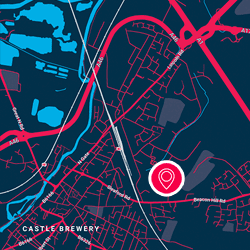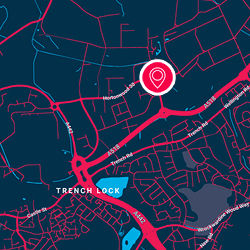BLOG
Don’t Do Anything on the Cloud Until You’ve Read This – Part 1 – Discovery
There are many business cases for building a strategy to move to public, private, hybrid or multi-cloud solutions under normal trading conditions. But as we all know, 2020 has been anything but normal. Now, perhaps more than ever, your choice about the right cloud solution could be the difference in your business’ long-term sustainability and success.
Public cloud adoption has been making the news for years, however, Forrester predicts that the private cloud market, whether managed in-house or outsourced, will continue to grow through to 2022 despite public cloud adoption. This article provides key points to address prior to cloud adoption, to ensure a successful and objective aligned transition.

Up to 80% of respondents cited lack of management as a reason to migrate from the public cloud.
Rushing to the cloud without a business aligned plan can have serious consequences, including failed projects and uncontrolled spending. And right now, businesses are more focused on developing capability that provides the agility to pivot the business strategy quickly to take advantage of new market opportunities. Whilst agility is important, we also understand that businesses need flexible business continuity solutions, and to reduce costs wherever possible to make up for lost revenues and the ongoing potential impact to their business due to Covid-19 and social distancing.
In IDC’s 2018 Cloud Adoption and AI Survey, 80% of respondents migrated applications or data away from public cloud and back to on premise or private clouds. Those respondents cited Security, Cloud Spend, Governance and lack of expertise managing multiple clouds as the reasons to re-address their cloud posture.
So, with the future being more multi-cloud or hybrid cloud, migrating to and defining ‘the cloud’ has never been more complex and no two journeys or paths are the same. That’s why it is important you have the best understanding of the current state of your digital landscape and your desired state that align with business drivers and objectives. Perhaps with the unexpected impacts of 2020, your digital strategy and business goals have changed, requiring more focus and investment, and this needs to be taken into consideration.
It is important to take these experiences and use them in defining your own cloud strategy. By working with a good service provider, you are provided with the experience and frameworks needed to ensure the very best outcomes for each unique business requirement, without falling into the challenges seen by earlier adopters.
Given some of the cited challenges, as an IT director or CIO you should be working closely with someone within your business, or a trusted partner, who can help take you through a process taking some of the following elements into consideration.
Identify the ‘Why?’
The first item that needs to be identified are business motivators. What are the reasons behind the drive for change? The drivers vary from looking for technical innovation that allows a business to compete in their marketplace, to reducing spend, reducing risk and improving SLA’s to the business. Whatever the driver, identifying the ‘why’ will go a long way in successful cloud adoption and helping you focus on the business needs for longer-term sustainability and growth in your business.
Identify the Applications
Next, you need to take a step down into more detail and understand the business and its high-profile applications. By interviewing stakeholders, not just IT personnel (although important), identify the data and applications that are critical to the business, either its performance or operation – again, linked to motivators. When obtaining the technical information from IT, getting an understanding of the security posture is also important. It is likely that a desired security posture is tiered, dependent upon risk and impact of differing applications. These discussions will help formulate supplementary and complementary plans that will ultimately help your business succeed in the most efficient and effective way.
By deploying automated discovery tools, you are more likely to find those much-forgotten corners of the infrastructure that can help eliminate scope-creep later, by giving you better visibility at an earlier stage. You would be surprised the number of projects that change scope because of those forgotten elements! So, by using discovery tools, you can quickly view a complete estate including all applications installed, and start to identify dependencies and validation checks for security expectations. You should be looking to extend discovery into performance monitoring to create a baseline and develop further KPIs for defining success.
Identify the Network
The last part to discuss in the discovery process is network discovery. Whether it is LAN, WAN or internet based, all your business applications are accessed across a network and it is the performance, or lack thereof, that can drastically impact an application or cloud performance.
Using the above, you will be ready for Don’t Do Anything on the Cloud until You’ve Read This – Part 2 where we will look at Assessment.

Timico
We deliver Connectivity, UC&C, Cloud & Hosting, Security and IT Managed Service Solutions to our customers, through Service Operations based in Newark, Winnersh, Telford and London.










